#both béla
Text


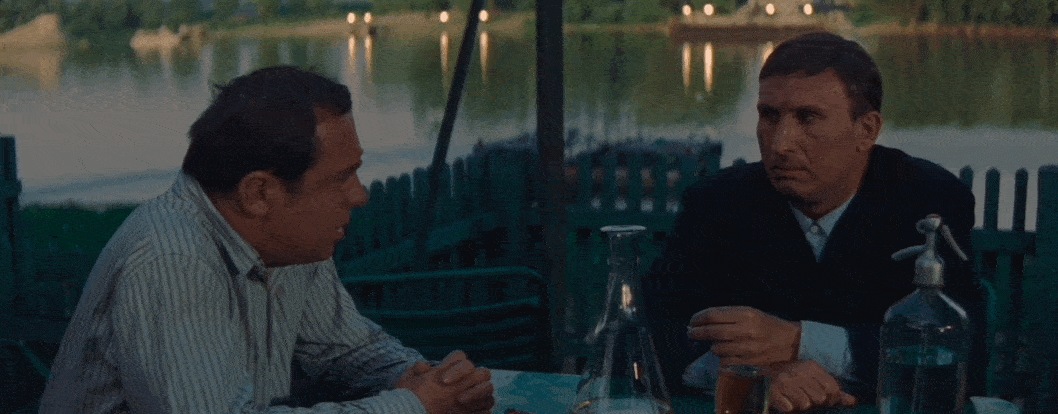



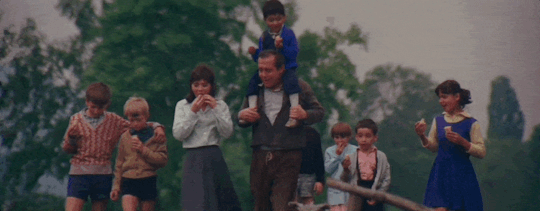










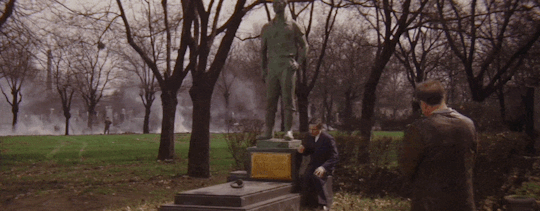
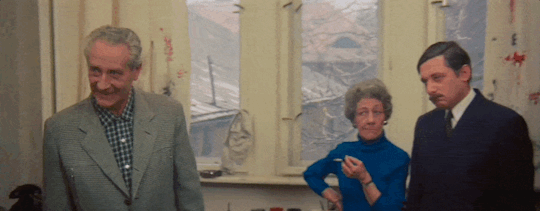
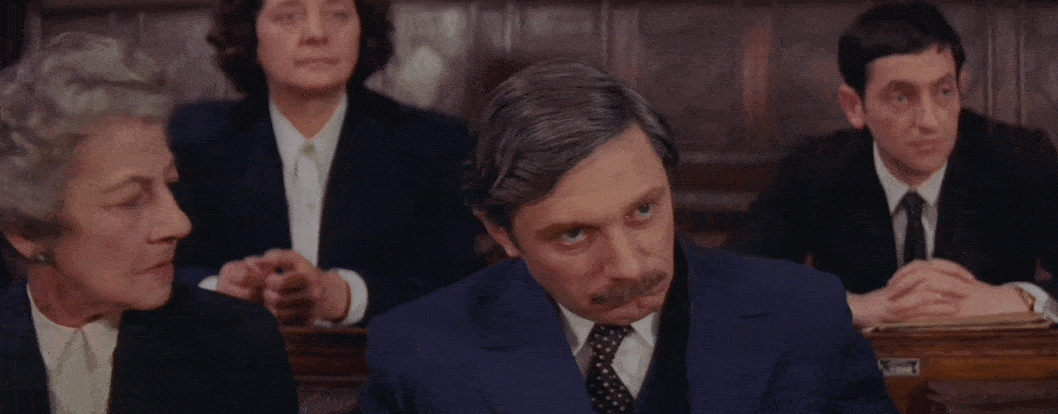
A tanú - 1969. Rendezte: Bacsó Péter. Főszerepben: Kállai Ferenc, Őze Lajos, Both Béla, Fábri Zoltán, Monori Lili, Bicskey Károly, Georgette Mertzhradt, Versényi Ida. https://podcasters.spotify.com/pod/show/magyarfilmekatolcettig
#film#movie#retro#régi#mfac#magyar filmek ától cettig#hungarian#magyar#kállai ferenc#őze lajos#both béla#fábri zoltán#monori lili#bicskey károly#georgette mertzhradt#versényi ida#a tanú#1969#bacsó péter
14 notes
·
View notes
Note
what if I gave Bela a little kiss on his forehead 😳
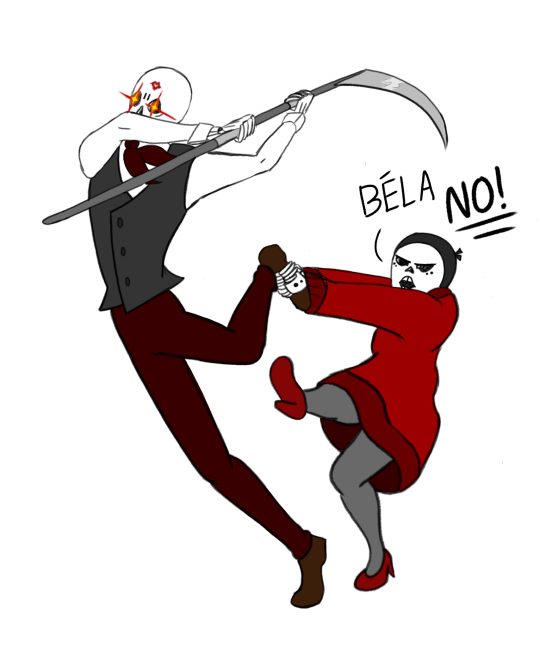
Probably not a bright idea to be honest
#you can't reap what isn't dead but he can solve both those problems in one swing#the skeletons are in development#oc béla#oc loca#bloodle doodles
10 notes
·
View notes
Video
youtube
To mark Béla Lugosi’s birthday the Hungarian National Film Archive released the only remaining footage from the movie Küzdelem a Létért (Struggle for Life) the only footage remaining from his Hungarian movie career, which is such a shame, but at least we still have this.
#Lugosi Bela#Lugosi Béla#Bela Lugosi#Béla Lugosi#Faustian Fables#Writing his name so many times feels so weird lol#Arisztid Olt#Olt Arisztid#Yeah let's add the early stage name as well why not#Using both English and Hungarian spelling
9 notes
·
View notes
Text
dual wielding propaganda here for Béla Lugosi and Boris Karloff, both of whom I don’t think will win but there’s still time for a turnaround! come on tumblr goths, vote with your heart! vote for shirtless men being tied up and threatened!
#(editor's note: tw on that link if you're leery of body horror mentions)#submission#propaganda#boris karloff#bela lugosi
43 notes
·
View notes
Note
for the otp meme: 2, 10 and 32 for skwistok ofc :3
No way! Skwistok?? That's not really a ship I think about 🤭
2. Any sleep habits either had to get used to?
I think Toki specifically had to get used to Skwisgaar's insane sleeping schedule. Like sometimes the guy is dead in the middle of the day, and sometimes he's fully awake at 4 am working on some riff. And no, he won't accept suggestions about fixing it. So Toki learns to sleep over the racket. Skwisgaar does have the nerve to try to wake him up to ask for his opinion sometimes. Toki likes to get back at him by painting his face when he's asleep and other not PG rated things-
Also, and we're already talked about this, but addict-to-cuddling Skwisgaar forcing Toki to stay on the bed for a few more because he's wrapped around Toki. Not that Toki minds, it's a great excuse to not go to practice-
10. What are some non-sexual activities they do together?
Toki likes to make Skwisgaar participate in his tea parties with his plushies/toys. This ties with the previous question, where Toki awakes Skwisgaar to make him play with him. Skwisgaar is half conscious holding a cup of tea and letting Toki manhandle him like a puppet. He keeps dozing in and out while Toki gives him a new hairstyle and outfit because Skwisgaar is 'De Brutals Guitarsist Princess of Heavy Metals Kingdoms'.
Because of a certain fic that changed my brain chemistry, I like the idea of Skwisgaar and Toki having a side project together, so there's that too. Toki actually rising to the challenge of being Skwisgaar's musical counterpart. Rehearsals being both challenging but actually fun for the both of them. This is peak Skwistok to me.
I also love them doing mundane things like watching movies together, but not Hollywood type of stuff or blockbusters. B movies, european cinema, cult horror, spaghetti western, silent films. I'm talking about Skwistok watching Battleship Potemkin unironically. I'm talking about Skwistok exploring Béla Tarr's filmography. I'm talking about Skwistok studying the American lifestyle through the lens of Harmony Korine's work. "Are you fucking insane?" Yes, next question.
32. How do they resolve their arguments?
They usually stay away from each other until they calm down. Toki doesn't really mind apologizing after the matter, but it's a bit harder for Skwisgaar, who tends to believe he's always right. So Toki has learned to wait for Skwisgaar to come to him first, because that means he's ready to make amends, rather than just let Toki carry all the blame. He usually walks up to Toki's room and knocks twice, his head hanging low and his eyes on the floor. Skwisgaar ironically takes arguments the hardest because of Bookklok so, when they've finished talking, Toki raises his arms and Skwisgaar jumps into them. Just a big kitty looking for assurance that everything is alright
From this ask game
21 notes
·
View notes
Text

Peter Eötvös
Hungarian conductor of modernist music who went on to compose operas with texts ranging from Three Sisters to Angels in America
The Hungarian composer and conductor Peter Eötvös, who has died aged 80, is now best known for the 12 operas that he wrote during the last 25 years of his life. Before that, he played a leading role as a conductor specialising in the promotion of European musical modernism.
Premiered in Lyon in 1998, the work that launched Eötvös’s career as a successful opera composer was Three Sisters. The libretto, written with Claus H Henneberg, reworks Anton Chekhov’s play into a series of three “sequences”, each offering a version of events from the point of view of a single character; no fewer than four roles are taken by countertenors.
From then onwards, he frequently added new stage works to an already growing number of concert works in an extensive output notable for its radiant lyricism and brilliant orchestration. By extending the modernist origins of an approach rooted in the music and ideas of Pierre Boulez and Karlheinz Stockhausen with the aid of deeply considered investigations of other music of cultures beyond Europe, Eötvös gradually found his own voice.
Stockhausen had already drawn on Japanese musical and theatrical traditions, and Eötvös’s earliest opera, Harakiri – based on the ritual suicide of Yukio Mishima – was composed as far back as 1973, while both composers were working together in Osaka. Subsequently, however, Eötvös’s style – variously influenced by Chinese as well as Japanese traditions, by Indian, African and Basque musics, by jazz and, not least, by Béla Bartók and the folk repertoires of his native Transylvania – developed much of its individuality from interrogations of those cultures that went far beyond any mere cultural tourism.
His instrumental compositions, as well as his operas, often spring from such sources: the large-scale orchestral work Atlantis (1995), for example, draws on Transylvanian dances that act as a symbol of a lost culture associated, for the composer, with renewed hope. In later years he received many commissions from the world’s leading orchestras: in 2016, for instance, for Oratorium Balbulum, to a text by Péter Esterházy, for the Vienna Philharmonic Orchestra, premiered at the Salzburg festival. Ruminating on a variety of topical political issues, from the 9/11 terrorist attacks to relationships between countries, this work is typical of Eötvös’s social and political concerns.
But his operas already seem likely to represent the most enduring and surprisingly varied dimension of his output. Adapting novels and plays by writers both classic and modern – including Jon Fosse, Jean Genet, Tony Kushner and Gabriel García Márquez – these works demonstrate both Eötvös’s wide literary ambitions and his willingness to explore a variety of different dramatic approaches, comic as well as tragic. He was assisted in devising some of these opera libretti by Maria Eötvösne Mezei, his third wife.
Le Balcon – its libretto, by Françoise Morvan, André Markovitz and the composer, derived from Genet’s now classic tale of power struggles within a revolutionary setting – was first seen at Aix-en-Provence in 2002. Mezei’s libretto for Angels in America (2004) boils down to less than three hours the original seven hours of Kushner’s play about HIV/Aids.
Several of his operas have been seen in the UK. When his Márquez-based Love and Other Demons was produced at Glyndebourne in 2008, Eötvös became the first non-British composer to have a stage work premiered there. Described by the composer as “a bel canto opera”, it explored illicit love, superstition, race and demonic power, with a libretto by Kornél Hamvai. The music underpins the drama with an innate understanding of how orchestral forces can enhance the overall effect; though indulging in some gorgeous sounds, the composer displays the rare knack of knowing when less can sometimes be more powerful than more.
Eötvös’s final opera, Valuska – also his first with a libretto in Hungarian, by Mezei and Kinga Keszthelyi – was drawn from the novel The Melancholy of Resistance, by László Krasznahorkai: a tragi-comic, surreal story centring on a newspaper delivery man and the arrival in his small town of a circus with, as its star attraction, the world’s largest taxidermied whale. Valuska was premiered in Budapest last December.
Eötvös was, like his older compatriots György Ligeti and György Kurtág, a native of multi-ethnic Transylvania – then in Hungary but subsequently transferred to Romania; his birthplace was Székelyudvarhely. The turbulent final months of the second world war caused his family, including his mother, Ilona Szucs, to flee westwards. She was a pianist, and his father, Laszlo Eötvös, was a lawyer. Peter’s early childhood was spent in Miskolc, a northern Hungarian town where he first met Ligeti. The latter was already becoming established as a composer and teacher by the late 1940s, and the two remained in contact.
Eötvös studied piano and composition at the Franz Liszt Academy in Budapest from 1958 onwards; after advice from Zoltán Kodály, János Viski became his composition teacher. He soon gaining a reputation for improvising to accompany silent films and composing scores for both cinema and theatre.
In 1966, at the age of 22, he moved to Cologne on a scholarship to work with Stockhausen. He also studied composition with Bernd Alois Zimmermann and began to conduct. When I first went to the Darmstadt Summer School, in 1974, I recall Eötvös not only as one of Stockhausen’s closest acolytes but also as a member of a recently formed group of young Cologne-based musicians calling themselves the Oeldorf Group and specialising in live performance involving electronics.
From 1978, after Boulez asked him to conduct the opening concert of IRCAM, his Institut de Recherche et Coordination Acoustique/Musique, in Paris, Eötvös found fame as a conductor specialising in all the latest compositional trends that helped to drive the global modernist agenda of the time. He quickly assumed the position of musical director of Ensemble Intercontemporain, IRCAM’s flagship chamber orchestra.
He conducted the world premieres of Stockhausen’s operas Donnerstag aus Licht (1981) and Montag aus Licht (1988). In the UK, he conducted the Covent Garden performances of Donnerstag in 1985 and was principal guest conductor of the BBC Symphony Orchestra from that year until 1988. He worked with the London Sinfonietta and also conducted Leos Janáček’s The Makropulos Case at Glyndebourne in 2001.
It was only after relinquishing his duties with the Ensemble Intercontemporain, in 1991, that Eötvös really came to the fore as a composer. With his new status on the European scene, and the political events of 1989 onwards, came new responsibilities.
He taught conducting and contemporary chamber music in both Karlsruhe and Cologne in Germany. Having already founded the International Eötvös Institute for young conductors and composers in Budapest in 1991, he went on to establish the Peter Eötvös Contemporary Music Foundation in 2004. It was at this moment, when Hungary joined the European Union, that Eötvös and his wife Maria – who had both previously lived in Cologne, Paris and then Hilversum in the Netherlands – finally moved back to Budapest.
A son from Eötvös’s first marriage, to the actor Piroska Molnár in 1968, predeceased him. In 1976 he married the Taiwanese-German pianist Pi-hsien Chen, with whom he had a daughter, Ann-yi. They divorced and he subsequently married Maria Mezei in 1995. He is survived by her, Ann-yi and by two stepsons from that marriage, Peter and Daniel.
🔔 Peter Eötvös, composer and conductor, born 2 January 1944; died 24 March 2024
Daily inspiration. Discover more photos at Just for Books…?
8 notes
·
View notes
Text
Hogy a XX. században mennyire lehetett élni a történelmet
1910. november 21én született Bot Béla, aki színészként a Both Béla nevet vette fel. egy ország csettint a hangjára hogy Béla bácsi, a nyugdíjas töritanár, Vágási Jutka sulijában. azaz Bástya elvtárs, Bacsó ürgebőrbe varrt klasszikusában. azaz Móricz Zsigmond veje. igen, az a Móricz Zsigmond ami nekünk pár novella meg egy körtér. aki mikor megtudta hogy a szinitanodába járó lánya úgy van a lovagjától és éppen az abortuszon agyalnak leültette őket hogy na akkor házasság, ha meglett akkor fogadva lesz, mindegy milyen kezdők minden tekintetben.
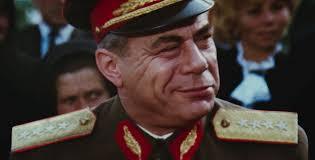
egyébként a gyerek a házasság ellenére nem született meg, a házasság pedig nem sokáig tartott, nem feltétlen a gyerek hiánya miatt.
Bástya elvtárs a szegedi Nemzeti Színház, az Állami Faluszínház és a Madách Színház igazgatója volt. szürreális nekünk elképzelni ahogy anno a Madáchba a Vágy Villamosára tódult a nép az igazgatása alatt és nem a Macskákra (bizonyára azért mert nem volt műsoron). rengeteg filmszerep fűződik Béla bácsi nevéhez és lehet hogy a Barátok közt tovább tartott de a Szomszédok volt az a tv sorozat ami egy ország retinájába beleégett, ahol a tanáriban mindig csak 4 tanár volt és abból az egyik a 80plusz éves, nyugdíjas kisegítő (Horváth Ádám látta a jövőt).
Both Béla 20 éve, 2002ben halt meg. a farkasréti temetőben van a sírja.
46 notes
·
View notes
Photo

The statue of the hooded figure opposite Vajdahunyad Castle is that of Anonymous, the unknown chronicler at the court of King Béla III (r 1172–96) who wrote a history of the early Magyars. Note the pen with the shiny tip in his hand; writers (both real and aspirant) stroke it for inspiration.
7 notes
·
View notes
Text
Theme Breakdown for the Demons/Angels Universe (Part 1 of ???)
Someone suggested I do this, here’s a break down of how I chose all the themes for the Sins + Virtues. The reasons will range from “something extremely deep” to “haha instrument go brrrr.” I’ll do more characters from this universe in the future.
I compile everyone’s themes for this universe in this playlist!
Invidia: String Quartet No. 3, BB 93: Seconde parte: Allegro – Béla Bartók
Starting off strong with a not that deep reason, the opening trill from the second violin has always reminded me of a snake. Invidia’s design draws inspiration snakes given that she’s canonically the Serpent of Eden.
This is a very musically technical piece, I like how it all comes together to sound very layered and barbaric. I think that fits Invidia, she’s got a lot of pent up emotion underneath her cold exterior.
Ira: Symphony No. 10 in E Minor, Op. 93: II. Allegro – Dmitri Shostakovich
Supposedly this is meant to be a musical portrait/representation of Joseph Stalin.
Heavy brass evokes imagery of marching armies. Reminds me of John Williams’ work for the original Star Wars trilogy.
Acedia: Music for Strings, Percussion, and Celesta, Sz. 106, BB 114: I. Andante tranquillo – Béla Bartók
This was a bit of a fine line I had to walk, I wanted something peaceful but still sinister.
I find that Bartók walks that line perfectly in this movement, it’s simultaneously tranquil but there’s a darker tone to it.
Superbia: Ruslan and Ludmilla: Overture – Mikhail Glinka
Overtures are usually the openings to operas, ballets, etc. They’re typically very flourishing and bombastic. I find that this specific overture is the right amount of bombastic I wanted for Superbia’s theme
Luxuria: Samson et Dalila, Op. 47, R. 288: Bacchanale – Camille Saint-Saëns
In music, bacchanales are typically meant to depict drunken revels/orgies.
The opera is based off of the story of Samson and Delilah from the Old Testament. In many interpretations of the tale, Delilah is meant to be a sinful, sexual woman.
Gula: Symphony No. 1 in D Major "Titan": II. Kräftig Bewegt, Doch Nicht Zu Schnell - Trio: Recht Gemächlich - Tempo Primo – Gustav Mahler
I found the extremely long title of this movement really funny lmao
There’s a playful, joviality to this piece. I think that fits given Gula’s the more optimistic one of the Sins.
Avaritia: The Marriage of the Figaro Overture – W.A. Mozart
Historically, operas have been associated with the upper class and wealth. Many operas were commissioned by nobility
Mozart is the best of the best, it’s only fitting that Ava’s theme would be the best of the best as well
Camael: Variations on an Original Theme, Op. 36 “Enigma”: VIII. W.N. (Allegretto) – Edward Elgar
All of the movements of Elgar’s Enigma Variations are inspired by various friends and loved ones of the composer.
More graceful and lyrical melody in contrast to Invidia’s barbaric and savage theme.
Zadkiel: Symphony No. 9 in E Minor: III. Scherzo: Molto Vivace – Antonín Dvořák
You’ll notice that Michael and Zadkiel’s themes are similar. Both are from the same composer (Antonín Dvořák), both are the third movement of a symphony, and both are scherzos.
It ties into Zadkiel being Michael’s successor. Not just literally, but his musical theme (symphony 9) being a successor to Michael’s theme (symphony 7).
Gabriel: Piano Quintet in C Minor: II. Scherzo (Allegro non troppo) – Alexander Borodin
Scherzos are usually short, fast paced and playful pieces.
Raphael: Petite Suite (orchestrated by Henri Büsser): IV. Ballet – Claude Debussy
Very happy and playful piece, easily fits her personality
Uriel: String Sextet in D minor "Souvenir de Florence", Op. 70: II. Adagio cantabile e con moto – P.I. Tchaikovsky
Very innocent and romantic vibes, contrasts with Luxuria’s boisterous bacchanale
There’s a viola solo in this piece. And I feel like there’s a viola joke to be made here with Uriel being the most uptight, pretentious asshole, but I’m blanking out on one >:(
Jophiel: Double Concerto in A Minor: III. Vivace non troppo – Johannes Brahms
A big motif I keep with Jophiel is balance, their theme is no different.
The piece starts in a minor key and ends in a major key. The concerto is meant for a solo violin (the upper register of stringed instruments) and a solo cello (the lower register of string instruments), along with the orchestra.
Michael: Symphony No. 7 in D Minor: III. Scherzo: Vivace – Antonín Dvořák
I already talked about how Michael and Zadkiel’s themes mirror each other, so I won’t copy and paste it all here lmao
I became obsessed with this particular piece during the early days of the COVID pandemic. I’ve always associated this piece with enduring things despite the hard times.
#oc#demons/angels universe#melo’s musings: art blog edition#bts notes#aka my excuse to ramble about classical music
5 notes
·
View notes
Photo

Béla Kun, Hungarian Revolutionary and Leader of the Short-lived Hungarian Soviet Republic in 1919 Uncredited and Undated Photograph
“The working-class movement in Austria-Hungary previous to the risings already bore all the signs of developing revolution. The Austro-Hungarian and German papers give us only fragmentary information about the revolutionary movement which has sprung up. But even from that we can make two important deductions concerning the strength, the power of resistance, and the meaning of the revolutionary movement.
First, the strike in Hungary is not a purely local event. It is not a series of strikes embracing separate industries. It is one mass movement, bearing the stamp of the General Strike, in the sense that work has ceased everywhere, in all the most important branches of industry, transport, and mining.
Secondly, it is absolutely impossible to reduce the causes for the General Strike purely to hunger or the demand for electoral reform. The General Strike is directed against the machinery of the State — against militarism and discipline.All the demands of the strikers are connected with the question of power, and, as such, rise beyond the limits of the parliamentary State.
The movement, it cannot be doubted, will not continue on the scale of the usual mass strike, especially as it is fraught with the most deadly peril for the vital interests of a State at war...
In Budapest there is a general strike. The railwaymen have struck. Other enterprises are on the eve. The postal and telegraph employees are adopting passive resistance, which is nothing but a veiled form of strike.
The chief coal pits are also idle. According to the declaration of the Hungarian Minister for Commerce, 600 truckloads of coal per dray are wanting through the strike at Petroszeny alone. The transport crisis has reached its maximum.
The workers openly refuse to obey the orders of the administrative officials of the militarised enterprises. They threaten the commandants and officers with the fate of the colonel at Pecs, whom the soldiers killed with their rifle-butts. The repressive measures undertaken in the case of one individual workman, who had been arrested for a statement of this kind, served as the immediate cause of a strike in the largest mining district in Hungary. In Budapest, after an exchange of shots in the State railway shops, the workers sacked the office of another factory...
And from the open dictatorship of the capitalist class, it is not a long step to the open dictatorship of the proletariat.” Béla Kun, “The Revolution in Hungary” 1918
Like so many revolutionaries, Kun fled to the Soviet Union after the collapse of the Hungarian Revolution. While in the Soviet Union, he worked on behalf of the Comintern, both in Moscow and as as an undercover agent abroad. Also like so many revolutionaries, he was accused by Stalin of being a Trotskyist (he wasn’t, although in the early 20s, he and Trotsky had collaborated on revolutionary work) and was summarily executed in 1938.
27 notes
·
View notes
Text
Inspiration From Trivia #15
Béla Kiss, also known as the "The Monster of Czinkota,” was a Hungarian serial killer born in 1877 and active from 1900-1914. It is thought that he murdered 24 young women and attempted to pickle them in giant metal drums that he kept on his property.
✧・゚: ✧・゚: Word of The Day :・゚✧:・゚✧
Curtail (v. French, late 15th century): Reduce in extent or quantity; impose a restriction on.
(Continued history of Béla Kiss below)
Kiss was a tin smith in Czinkota, Hungary (modern Budapest) since the 1900. His neighbors considered him pleasant and he engaged in amateur astrology and found interest in other occult practices. Around 1912, local towns folks began to notice the accumulation of mental drums on Kiss’ property. Kiss reasoned that the drums were filled with gasoline in preparation for the oncoming war (WWI). When the war began, Kiss was conscripted and left his home in care of his housekeeper, Mrs. Jakubec.
In July 1916, police received report from a local landlord that they had found several large metal drums on his property. Recalling Kiss’ stockpile, the constable directed needy soldiers to the containers. An odd smell was noted upon the opening of the containers. At this point a detective took over and requested the opening of the drums on Kiss’ property, despite the protest of Mrs. Jakubec. Inside was discovered the body of a strangled women. After opening all the other drums on the property, the police uncovered a total of 24 bodies.
The police notified the military to arrest Kiss if he were still alive, but due to the commonness of his name he was not able to be located. The police also initially arrested the housekeeper, believing that she was involved. However Mrs. Jakubec argued that she had known nothing and cooperated with the police by showing them to a room that Kiss had told her never to enter. Inside was a room filled with bookcases with books primarily about poisons and strangulations as well as a desk that contained a number of letters involving Kiss’ correspondence with 74 different women as well as a photo album.
The police were able to learn several things from the letters: the oldest of the letters was from 1903, Kiss had been defrauding women who were looking for marriage, he placed ads in the marriage columns of several newspapers, and he had selected mainly women who had no relatives living nearby and knew no one would notice their disappearance right away. He courted them and convinced them to send him money and if they proved troublesome he killed them. Police also found old court records that indicated that two of his victims had initiated court proceedings because he had taken money from them. Both women had disappeared and the case had been dismissed.
On October 4th, 1916, the detective, Charles Nagy received word that Kiss was recuperating in a Serbian hospital, but Nagy was too late. By the time he arrived, Kiss had escaped by placing the body of dead fellow solider in his bed. Nagy alerted the Hungarian police but all “sightings” proved false.
Speculation arose later that Kiss possibly assumed the identity of the dead solider he used to mask his escape. Many additional rumors sprouted up around this time to explain his disappearance, but none were ever confirmed.
In 1920 a soldier in the French Foreign Legion reported on another legionnaire named Hoffman (the name Kiss had used in some letters) who had boasted how good he was at using a garrote, and who fit Kiss' description. "Hoffman" deserted before police could reach him.
In 1932, homicide detective Henry Oswald was certain he had seen Kiss coming out of Times Square Subway in New York City. There were also rumors that Kiss was living in the city and working as a janitor but they could not be verified.
The fate of Béla Kiss remains unknown.
#Word of the day#inspiration#writing inspiration#writing#write#writers#creative writing#writing prompt#writers block#writer#history#historical#trivia#trivia prompt#inspiration from trivia#bela kiss
3 notes
·
View notes
Note
Dad, I looked it up and... Bela isn't gender-neutral name.
https://en.m.wikipedia.org/wiki/B%C3%A9la_(given_name)
It's strictly (or at least predominantly?) male😅
So you just insulted every guy named Bela🤣🤣/j
That's also "Béla" with an accent, for one. Which is not the same thing.
For second, Bela can be used for both genders, it's just that for women it's better to use "Bella" (even though they're pronounced differently)
Third, that means Alcina gave Bela a male name to begin with which supports my Trans-Bela headcanon /j and also means Bela was chill just sticking to a male name. Good for her.
#it's also worth pointing out Bela is strictly male in *slavic* cultures specifically so...#i don't think that applies here anyway#asks#anons#plus who cares#they're fake characters /lh
2 notes
·
View notes
Note
rosette, bouquet, and tulip for bela and loca
🏵️ [ROSETTE] What flower symbolises your OC best and why? What does the flower mean in floriography?
Irises for Béla. Any color but mostly blue ones. They symbolize not only the vastness of grief, but also the sky and the infinite.
Wisteria for Loca, a fragrant blossom that often takes over abandoned areas. They are commonly used in painting and poetry to symbolize a sad kind of longing.
💐 [BOUQUET] If you could send your OC a bouquet, what flowers would make it up and what is the overall message?
I would send them both the same bouquet comprised of chamomile, geraniums, snapdragons, willow, columbines, and yellow carnations; all of which to say sorry you're dead but you brought this upon yourselves.
🌷 [TULIP] What is your OC's favourite flower and colour?
Béla loves every flower (as flowers are hard to come by in the Land of the Dead and actually kill dead people a second time) but is keen on irises particularly and in any color he can get his dry boney hands on.
Loca never cared much for flowers (especially after dying and being brought to the Land of the Dead) until Béla went off on what they mean and how important they are. She particularly likes lotuses and how they grow in even the darkest and murkiest of places.
Flower Asks
2 notes
·
View notes
Text

Oh! Well I never! Was there ever
A cat so clever as magical Mr. Mistoffelees Cringefail Poor Pussy!!
Horrors beyond your comprehension… yer welcome… I guess…
Anyway @soapkaars hasn’t seen the masterpiece horror movie that is Cats (2019), so I made him watch it and we both bullied Mr. Mitoffelees and realized that it would be perfect for Lorre. It hits all the checkmarks:
pathetic loser, check
kind of a love interest but not really, also no kiss scene, check
gay moment™, check
I also suggested my father Béla for Skimbleshanks the Rail Me Cat, because orange cats are known himbos and he is the hot one in the movie, because he wears pants. There are more to the Old Hollywood casting, but I could only do two as I took too much damage already.
Bonus:
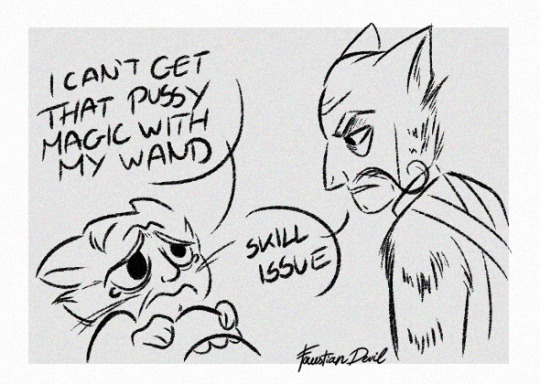
#Cats (2019)#Mr. Mistoffelees#Skimbleshanks the Railway Cat#Peter Lorre#Bela Lugosi#Lugosi Bela#Béla Lugosi#Lugosi Béla#Faustian Fables#Faustian Imagery#I'm so sorry for this... truly...#If I made you feel lust tho... you okay... you wanna talk
27 notes
·
View notes
Text

Album Review: Michael Cleveland - Lovin’ of the Game
If respect can be measured by friendships, then Michael Cleveland is the Aretha Franklin of bluegrass.
The liner notes of Cleveland’s Lovin’ of the Game must’ve drained several ink jars for such bold-face names as the Travelin’ McCourys, Billy Strings, Vince Gill, Béla Fleck, Dan Tyminski, Charlie Starr, Tim O’ Brien and others who appear on various tracks when Cleveland isn’t jamming with his own band, Flame Keeper.
The guests are both the strength and relative weakness of the Game. For while the playing is beyond reproach, the diversity of players makes for a lack of cohesion as the album zigs across the jamgrass of “For Your Love” (Strings) before zagging to the country waltz of Gill’s “I Wish I Knew Now What I Knew Then” and the clichéd, new-country balladry of Starr’s re-recording of Blackberry Smoke’s “One Horse Town.”
On Lovin’ of the Game, the hottest tracks are instrumentals like “Thousand Dollar Holler” and “Contact,” with Fleck, Barry Bales and Cody Kilby.
At the center of it all is Cleveland, the blind, partially deaf fiddler who never fails to heat up any collaboration in which he’s involved.
Grade card: Michael Cleveland - Lovin’ of the Game - B
#michael cleveland#lovin’ of the game#2023 albums#billy strings#béla fleck#vince gill#the eagles#the travelin’ mccourys#dan tyminski#alison krauss and union station#barry bales#tim o’brien#charlie starr#blackberry smoke#flame keeper
2 notes
·
View notes
Text
Dracula (1931) English and Spanish Version

Bela Lugosi, born Béla Ferenc Dezső Blaskó, was cast as the vampire Count Dracula in Universal's 1931 adaptation of Bram Stoker's novel of the same name.
To be honest, I had never seen Dracula (1931) until this past summer (2022). It isn't because I'm not a fan of older movies, I love them, I just never found a good reason to watch this Dracula after already watching Francis Ford Coppola's Bram Stoker's Dracula (1992).
I admit, it was blasé of me. I should've watched it sooner (as well as the Hammer films— still haven't watched them). Despite all that, I've gotten around to it and my honest opinion is, it's finely acted for its time. Bela Lugosi is a marvelous Dracula, Dwight Frye was awesome as Renfield, but—yeah, there's a but— I preferred the Spanish version. Not an objective opinion, that's up to the viewer. I recommend watching both back to back. (They're both relatively short, so you won't be burnt out. I recommend ordering out and having a puzzle ready while you watch with a friend or two. It's a fun watch.)
To clarify, Bela Lugosi is and always will be Dracula. He is the icon we all imitate and imagine when we think of the count. Even Count from Sesame Street sounds and looks a lot like Bela.
Carlos Villarías has a completely different presence as Dracula. Where Bela is intimidating and charmingly suave, Villarías's Dracula is charming and a little goofy in the sense that he seems lovable.
My biggest gripe with both movies was their pacing. Getting from one part of the story to the next felt clumsy and abrupt, the ending suffered from the pacing the most. I chalk it up to the time the films were made. Talkies were relatively new in the 30s and I'm not knowledgeable enough with the technical aspects of film back then, but I have a feeling that it's relative to the pacing and length of the films.
Additionally, after reading Koren Shadmi's graphic novel, Lugosi: the Rise and Fall of Hollywood's Dracula (loosely based on Lugosi's life) I decided to rewatch Lugosi's Dracula. Learning about Lugosi's life, his personality (a womanizer and sexist) and his personal struggles made the film feel different. It felt bittersweet watching it. At the end, yes I still prefer the Spanish version, but when I watch Lugosi's Dracula I see a man acting his heart out. Doing something he loved and cherished. Despite the type of person he could be, he was tragic.
Lugosi was buried in his Dracula cape. The slumbering count.
2 notes
·
View notes